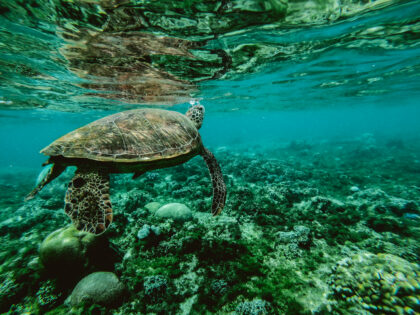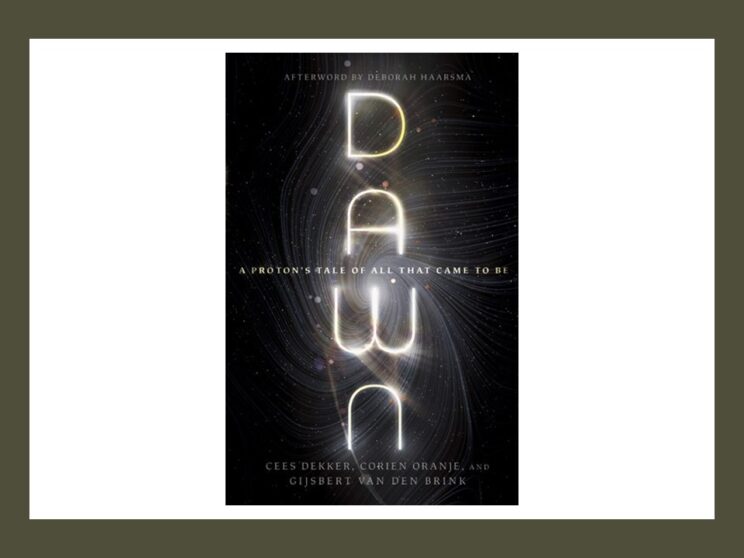
Everything is simpler in the comic books. Consider dominion of the world’s oceans. In both Marvel and DC comics, the sunken city of Atlantis (a public domain concept, after all) serves as a capital city for the seven seas. Namor typically sits on the Marvel Atlantean throne (in the upcoming Black Panther film, Namor will hail from TlÄlÅcÄn instead), vigorously defending the interests of the oceans and meeting all surface-dwelling challengers with a hearty “Imperius Rex!” His opposite number at the Distinguished Competition, Aquaman, is less aggressive and less inclined to assert any royal prerogative, but there’s still no question who oversees the seas. Here in the real world, however, most of the ocean belongs to no one. And so we face an open question: who owns the information contained in millions of aquatic genomes?
Perhaps that question does not keep you up at night. Although I was aware generally that genetic data can be considered intellectual property and patented, I never thought about who could claim the rights to oceanic genes. Fortunately someone has, but unfortunately the UN has so far failed to reach an agreement on the answer, which is holding up ratification of the UN High Seas Treaty. Since only a small portion of the oceans are territorial waters of various coastal nations, we could treat the genomes from international waters as a common good to benefit everyone or we could allow the finders of specific genes to claim ownership. It’s a question at the intersection of some neat science and weighty ethical questions.
As a matter of stewardship, we need to consider how to be the best caretakers of these resources. Maximizing the most benefit to the most people seems like a straightforward goal, if a bit nebulously defined. Taking a common good approach might ensure that we all get to reap the rewards. However, in that case we need to avoid a tragedy of the commons scenario wherein no one actually chips in to do the necessary exploration for finding what’s valuable. As a matter of justice, if we take a finders-keepers approach, we risk allowing the rich to get richer. After all, the resources to probe the secrets of the seas are not uniformly distributed. If we don’t want the richest countries or companies to be the most likely to get ownership of those undiscovered genes, we need a broader take on ownership.
And what exactly is all the fuss about? That’s where the neat science comes in. For example, did you know that fish proteins are now used to make ice cream smoother? Fish that living in Arctic and Antarctic waters have antifreeze proteins that prevent the water inside their cells from crystallizing and thus avoid damage. Well, if you add antifreeze proteins to ice cream, you get the same result: fewer ice crystals and better ice cream texture. There are plenty of other applications and potential applications for these proteins, as this review paper discusses, including lowering the energy costs of freezing. Any way we can use less energy benefits all of us with respect to climate change. (Antifreeze proteins are also interesting case studies in the evolutionary origins of genetic novelty, both from gene duplication and de novo origination.)
As the news story on the treaty indicates, the ocean has provided a biomedical bounty as well. Remdesivir, the antiviral currently being used to treat COVID-19, is given as an example. However, it doesn’t directly come from the ocean. Rather, it is one of a whole class of compounds called nucleoside analogues. The first examples of those came from marine sponges, and then we synthesized others like remdesivir. AZT, the HIV drug, is another drug in the same class with the same original inspiration. Those drugs work by being chemically very similar to the building blocks of DNA (or RNA) such that they get incorporated by viral enzymes when making more copies of their viral genome during infection. However, the nucleoside analogues are different enough that they don’t provide all the same chemistry, and the omissions are enough to disrupt the replication process or introduce problematic errors. I’m not clear what the legal connection is between these artificially designed and synthesized compounds and the intellectual property rights of the original sponge finders, so I’m not sure if they are entirely relevant to the UN High Seas Treaty terms. But broadly they are examples of how biochemical novelty exists in the oceans with biomedical applications.
The two cancer therapies, Halaven and Yondelis, are likewise indirect products of the sea. Inspired by chemicals made by ocean-dwellers–a different sea sponge and a sea squirt, respectively–they are synthetic analogues manufactured by nonbiological means. None of these four drugs are proteins. They are much smaller chemicals but more difficult to synthesize than proteins because of the variety of reactions involved; making proteins involves repeating one chemical reaction over and over again. For such nonprotein molecules, we need to either have the sponges or sea squirts make them for us, or we need to find a synthesis pathway we can perform at scale without biology. The former can be prohibitive if the organisms only make a little bit. The latter can be tricky to find, and we may only be able to get something close rather than something identical.
Proteins like the antifreeze proteins may be the most interesting options in the long run. Proteins are encoded by genes, and by now if we know the sequence of that gene, we can likely get bacteria or yeast or algae mass produce that protein for us. This eliminates the need for a bespoke pathway for each separate protein; most can be slotted into one of a couple of standard processes. And with current sequencing technology, we can know the sequences of lots of genes. We can now literally go out, scoop up a sample of seawater, and sequence whatever DNA is present even if we don’t know what kind of organism it came from or what proteins it encodes actually do. That will likely remain the bottleneck for a while, figuring out which bits are useful. This seawater sequencing has already been going on, filling digital archives with genetic data. The next breakthrough drug or food science boon may have already been found and we just don’t know it yet. If we are to be thoughtful and just stewards, then, we need to sort out who benefits sooner than later.
I’m excited to have the opportunity next month to provide the Qs for the ESN Conversation with the authors of the upcoming book Dawn, A Proton’s Tale of All That Came to Be. I haven’t read the book yet, but even just the title had me looking forward to it. I expect to share some post-reading thoughts in next month’s post, which will go up the day before this conversation. You can find the full details below, including the link to register for the Zoom session. I unapologeticly copied those details from this post about all the upcoming ESN Conversations, including one tomorrow (9/15/2022) with Paul Miller on The Religion of American Greatness.

Oct 13, 2022, 12:00 pm ET: Dawn, A Proton’s Tale of All That Came to Be with Cees Dekker, Corien Oranje, and Gijsbert van den Brink. Combining its authors’ scientific knowledge, storytelling skills, and insights from theology, Dawn provides a fresh look at the fundamentals of cosmology, evolutionary biology, and the good news of God in one overarching adventure—in the form of a gripping story. As a special treat, all three co-authors of this book will be joining us online from The Netherlands! IVP link to book description.
Andy has worn many hats in his life. He knows this is a dreadfully clichéd notion, but since it is also literally true he uses it anyway. Among his current metaphorical hats: husband of one wife, father of two teenagers, reader of science fiction and science fact, enthusiast of contemporary symphonic music, and chief science officer. Previous metaphorical hats include: comp bio postdoc, molecular biology grad student, InterVarsity chapter president (that one came with a literal hat), music store clerk, house painter, and mosquito trapper. Among his more unique literal hats: British bobby, captain’s hats (of varying levels of authenticity) of several specific vessels, a deerstalker from 221B Baker St, and a railroad engineer’s cap. His monthly Science in Review is drawn from his weekly Science Corner posts — Wednesdays, 8am (Eastern) on the Emerging Scholars Network Blog. His book Faith across the Multiverse is available from Hendrickson.

Leave a Reply